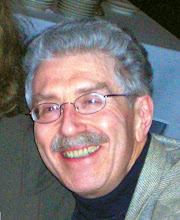 On Hitting Children:
On Hitting Children:A Review of Corporal Punishment in the United States
Over a century ago, it was common practice for men to hit their wives as a way of teaching them, gaining compliance, or chastising them. Today, this practice is clearly identified as abuse and is illegal. This cultural change in what was acceptable behavior came about slowly, as part of the concept of protection of human rights and acceptance that women were not the chattel of their husbands. Although both cultural mores and legal behavior in dealing with women have changed, the author of the present article states, "[I]ronically, the only humans it is still legal to hit are the most vulnerable members of our society — those we are charged to protect — children."This article discusses the position of the US government on corporal punishment (CP) of children.
"Spanking," "paddling," and "whupping," terms commonly used to describe punishment of children are, by definition, forms of hitting, either with a hand or with an instrument. Hitting children is at least as cruel and harmful an act as hitting adult women. It is an act of violence and a clear violation of the child's human rights.''
In the United States, it is against the law to hit older adults, prisoners, and criminals, and it is illegal for adults to hit children in school in more than half of US states, However, it is not illegal for parents to hit their children at home, largely "because of strongly held beliefs about parents' rights to discipline as well as a society view of parents as 'owners' of children."
The article by Knox summarizes numerous research studies that demonstrate strong associations between CP of children and later development of maladaptive behavior patterns, such as aggression and delinquency, and concludes that CP is probably more harmful than helpful. A meta-analysis of 80 studies shows that spanking and other forms of CP are associated with increased aggressive and delinquent behavior in children, poorer parent/child relationships, worse mental health in children, increased physical abuse of children, increased adult aggression and criminal behavior, poorer adult mental health, and increased later risk for abusing one's spouse or child. CP is often part of a larger pattern of abuse; it is also often the first behavior in a cycle of abuse of children, and the youngest children tend to suffer the most abuse.
Parents who practice CP are not aware of or fail to use alternatives that are more effective. Research documents that spanking does not have long-term positive effects on a child's adaptive behavior. When children are hurt physically, their brains and bodies become physiologically aroused, causing them to focus almost entirely on themselves and not on what they are supposed to be learning. Thus, researchers argue that children who are hit are, paradoxically, less likely to learn the lessons parents are trying to teach.
Many organizations, including the National Association of Pediatric Nurse Practitioners and the United Methodist Church, have taken a stand against CP. The article describes professional and international progress on ending CP, citing 24 countries that have enacted legislation to abolish all CP of children. In many countries, the ban on CP in the home is primarily educational and does not include a provision for criminal penalties. What has developed in these countries is a change in the cultural expectations about behavior toward children.
In 2006, the United Nations (UN) adopted a policy banning CP of children, maintaining that "No violence against children is justifiable; all violence against children is preventable."Leading reformers in the UN are outraged that only the United States and Somalia failed to ratify UN documents against CP in children, even though the death rate from maltreatment for US children younger than 15 years is 10 to 15 times higher than the average death rate in other wealthy nations.[1]
The author makes an appeal for efforts that hold promise for preventing child maltreatment, such as parent education and removal of social sanctions for hitting children. A key step in treating violent individuals is to confront, dispute, and develop alternatives to beliefs that support violence. The author suggests development of programs and campaigns to educate people about how to avoid hitting children. Many parents and caregivers are need help with discipline, and health care providers, such as pediatric nurse practitioners, can be highly effective educators for parents. These clinicians should provide anticipatory guidance as a preventive method of securing nonviolent parenting skills. Nurse practitioners are encouraged to teach parents about the potential adverse outcomes of CP and have parents commit to never hitting, shaking, or spanking their children.
Viewpoint
This article emphasizes a problem that may not be a dominant clinical concern. I like the emphasis on anticipatory guidance for parents, assuming that most parents will experience times when they are frustrated and angry at their children and need to learn another way to respond. Helping parents think in advance about what they must not do and make decisions about alternatives addresses the problem before it happens. Early teaching of parents also has a chance of reaching parents with the message before they have adopted abusive patterns about which to feel guilty.
Changing the cultural behaviors about what was acceptable for men in their relationships with women took a long time. Although we might also accept that it will take a similar length of time to change societal behavior towards children, the first step is to discuss the problem more broadly. I think that awareness of failure of the United States to support the efforts of the UN and other countries in limiting abuse of children should generate some discussion and perhaps create additional positive action.
References
1. UNICEF. A League Table of Child Maltreatment Deaths in Rich Nations. Florence, Italy: Innocenti; 2003
_________________________________________________Marilyn W. Edmunds, PhD, CRNP:
